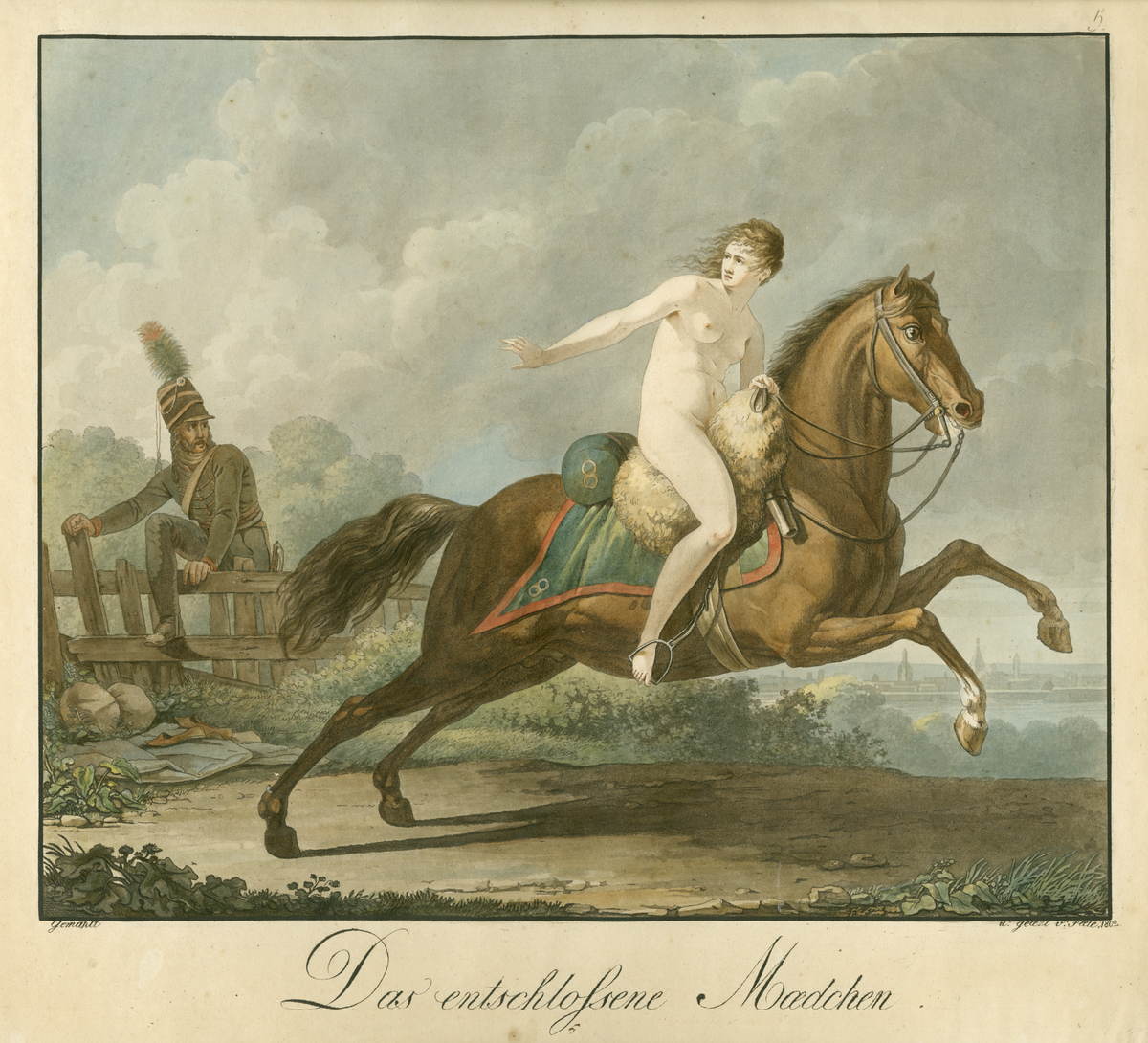Naturalizing German-French as Difference: The Determined Girl (1802)
Abstract
Body, gender, and space served as symbols in a system for differentiating between “German” and “French.” Born the son of a soldier, the painter and graphic artist Johann Baptist Seele (1774–1814) ascended to the role of court painter in Württemberg. In his painting The Determined Girl (1802), Seele used femininity as an allegory to mark “German” and distinguish it from “French” or “French occupation.” The painting shows a young Germania in the guise of a brave and clever girl who steals the horse of a French soldier. The soldier looks at her from the left while she rides off in the “right” direction.
Source

Source: Johann Baptist Seele, The Determined Girl, colored aquatint, 1802. Ludwigsburg Museum. Reprinted in Viktoria Schmidt-Linsenhoff, ed., Sklavin oder Bürgerin? Französische Revolution und Neue Weiblichkeit 1760–1830. Frankfurt am Main: Historisches Museum, 1989, p. 495.
© Ludwigsburg Museum